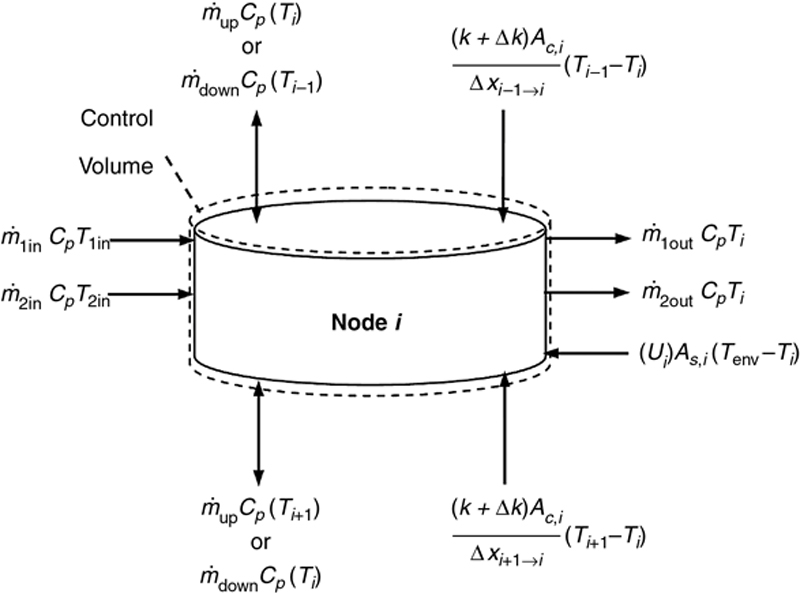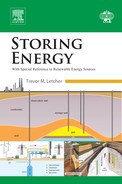References
[1] Lavan Z, Thompson J. Experimental study of thermally stratified hot water storage tanks. Sol Energy. 1977;19:519–524.
[2] Hahne E, Chen Y. Numerical study of flow and heat transfer characteristics in hot water stores. Sol Energy. 1998;64:9–18.
[3] Duffie JA, Beckman WA. Solar engineering of thermal processes. New York: John Wiley & Sons; 2013.
[4] Dincer I, Rosen M. Thermal energy storage; systems and applications, 2nd ed. Chichester, UK: John Wiley and Sons; 2011.
[5] Lightstone MF, Hollands KGT, Hassani AV. The effect of plume entrainment in the storage tank on calculated system performance. In: Proceedings of Solar Energy Society of Canada Inc., Ottawa, ON; 1988.
[6] Newton B. Modeling of solar storage sanks. M.Sc. thesis. Department of Mechanical Engineering, University of Wisconsin-Madison; 1995.
[7] Davidson JH, Adams DA. Fabric stratification manifolds for solar water heating. ASME J Sol Energy Eng. 1994;116:130–136.
[8] Shah LJ, Andersen E, Furbo S. Theoretical and experimental investigation of inlet stratifiers for solar storage tanks. Appl Therm Eng. 2005;25:2086–2099.
[9] Andersen E, Furbo S, Fan J. Multilayer fabric stratification pipes for solar tanks. Sol Energy. 2007;81:1219–1226.
[10] Hollands KGT, Lightstone M. A review of low flow, stratified tank solar water heating systems. Sol Energy. 1989;43:97–105.
[11] Hess CF, Miller CW. An experiment and numerical study on the effect of the wall in a thermocline type cylindrical enclosure. Sol Energy. 1982;28:145–152.
[12] Kleinbach EM, Beckman WA, Klein SA. Performance study of one dimensional models for stratified thermal storage tanks. Sol Energy. 1993;50:155–166.
[13] TRNSYS: a transient simulation program. Madison, WI: University of Wisconsin Solar Energy Laboratory; 2015.
[14] Nizami DJ, Lightstone MF, Harrison SJ, Cruickshank CA. Simulation of the interaction of a solar domestic hot water tank system with a compact heat exchanger. In: Proceedings of the Joint Conference of the Canadian Solar Building Research Network and the Solar Energy Society of Canada Inc., Fredericton, New Brunswick; 2008: .
[15] Cruickshank CA. Evaluation of a stratified multi-tank thermal storage for solar heating applications. Ph.D. thesis. Department of Mechanical and Materials Engineering, Queen’s University, Kingston, ON, Canada; 2009.
[16] Cruickshank CA, Harrison SJ. Heat loss characteristics for a typical solar domestic hot water storage. Energy Buildings. 2010;42:1703–1710.
[17] Mather DW, Hollands KGT, Wright JL. Single- and multi-tank energy storage for solar heating systems: fundamentals. Sol Energy. 2002;73:3–13.
[18] Cruickshank CA, Harrison SJ. Simulation and testing of stratified multi-tank, thermal storages for solar heating systems. Proceedings of the EuroSun 2006 Conference, Glasgow, Scotland, UK; 2006.
[19] Lightstone MF, Raithby GD, Hollands KGT. Numerical simulation of the charging of liquid storage tanks: comparison with experiment. ASME J Sol Energy Eng. 1989;111:225–231.
[20] Shyu RJ, Lin JY, Fan LJ. Thermal analysis of stratified tanks. ASME J Sol Energy Eng. 1989;111:55–61.
[21] Moran M, Shapiro H. Fundamentals of engineering thermodynamics. 6th ed. New York: John Wiley & Sons; 2008.
[22] Dickinson RM, Cruickshank CA. Exergy analysis of a multi-tank thermal storage for solar heating applications. Int J Exergy. 2014;15:412–428.
[23] Haller MY, Cruickshank CA, Streicher W, Harrison SJ, Andersen E, Furbo S. Methods to determine stratification efficiency of thermal energy storage process – review and theoretical comparison. Sol Energy. 2009;83:1847–1860.
[24] Fisch MN, Guigas M, Dalenback JO. A review of large-scale solar heating systems in Europe. Sol Energy. 1998;63:355–366.
[25] Phillips WF, Dave RN. Effects of stratification on the performance of liquid-based solar heating systems. Sol Energy. 1982;29:111–120.
[26] Cristofari C, Notton G, Poggi P, Louche A. Influence of the flow rate and the tank stratification degree on the performance of a solar flat-plate collector. Int J Therm Sci. 2003;42:455–469.
[27] Rosengarten G, Morrison G, Behnia M. A second law approach to characterizing thermally stratified hot water storage with application to solar water heaters. ASME J Sol Energy Eng. 1999;121:194–200.
[28] Yau Y, Rismanchi B. A review on cool thermal storage technologies and operating strategies. Renew Sust Energy Rev. 2012;16:787–797.
[29] Ontario Ministry of Energy. Achieving balance—Ontario’s long term energy plan. Toronto, ON: Ontario Ministry of Energy; 2013. p. 1–13.
[30] Pinel P, Cruickshank CA, Beausoleil-Morrison I, Wills A. A review of available methods for seasonal storage of solar thermal energy in residential applications. Renew Sust Energy Rev. 2011;15:3341–3359.
[31] Edwards S. Sensitivity analysis of two solar combisystems using newly developed hot water draw profiles—M.A.Sc. thesis. Carleton University, Ottawa, ON; 2014.
[32] Gao L, Zhao J, Tang Z. A review on borehole seasonal solar thermal energy storage. Energy Procedia. 2015;70:209–218.
[33] Flynn C, Siren K. Influence of location and design on the performance of a solar district heating system equipped with borehole seasonal storage. Renew Energy. 2015;81:377–388.
[34] Xu J, Wang RZ, Li Y. A review of available technologies for seasonal thermal energy storage. Sol Energy. 2014;103:610–638.
[35] Sibbitt B, McClenahan D, Djebbar R, Thornton J, Wong B, Carriere J, Kokko J. Measured and simulated performance of a high solar fraction district heating system with seasonal storage. In: Proceedings of the ISES Solar World Congress, Kassel, Germany; 2011.
[36] Rosen MA. The use of berms in thermal energy storage systems: energy-economic analysis. Sol Energy. 1998;63:69–78.
[37] Kizilkan O, Dincer I. Borehole thermal energy storage system for heating applications: thermodynamic performance assessment. Energy Convers Manage. 2015;90:53–61.
[38] Drake Landing Solar Community. http://www.dlsc.ca/
[39] Possemiers M, Huysmans M, Batelaan O. Influence of aquifer thermal energy storage on groundwater quality: a review illustrated by seven case studies in Belgium. J Hydrol: Regional Studies. 2014;2:20–34.
[40] Lee KS. Underground thermal energy storage. Seoul, South Korea: Springer; 2013.
[41] Zeghici RM, Essink G, Hatog N. Integrated assessment of variable density–viscosity groundwater flow for a high temperature mono-well aquifer thermal energy storage (HT-ATES) system in a geothermal reservoir. Geothermics. 2015;55:58–68.
[42] Singh H, Saini RP, Saini JS. Performance of packed bed solar energy storage system having large sized elements with low void fraction. Sol Energy. 2013;87:22–34.





